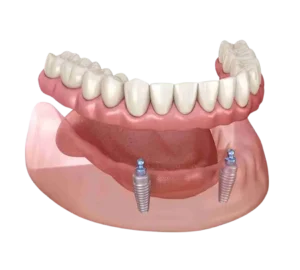Dental implants have revolutionized modern dentistry, offering a long-term solution to missing teeth and restoring both function and aesthetics to smiles. In this comprehensive guide, we will delve into the intricate process of dental implants, from the initial consultation to the recovery phase. Understanding every aspect of this transformative procedure is crucial for individuals considering dental implants as a viable option.
Understanding Dental Implants
Dental implants are artificial tooth roots surgically placed into the jawbone, providing a stable foundation for the attachment of artificial teeth. Unlike traditional bridges or dentures, dental implants replace both the visible tooth and its root, mimicking the natural structure and preventing bone loss in the jaw.
Key Components of Dental Implants
A dental implant comprises three main components: the implant itself, the abutment, and the crown. The implant, typically made of titanium, is surgically embedded in the jawbone. The abutment connects the implant to the crown, the visible and functional part of the artificial tooth.
Step-by-Step Guide to the Dental Implant Process
Initial Consultation: The journey begins with an initial consultation where the dental specialist evaluates the patient’s medical history and assesses the suitability for dental implants. The condition of the bone in the jaw is crucial in determining the candidacy for the procedure.
Treatment Plan: Based on the assessment, a personalized treatment plan is crafted. This plan outlines the type of dental implant, the number needed, and any additional procedures such as bone grafting if necessary.
Dental Implant Surgery: The surgical phase involves placing the implant into the carefully chosen site within the jawbone. Precision is paramount during this stage to ensure proper alignment and stability.
Implant Heals: Following the surgery, a period of healing, known as osseointegration, takes place. During this phase, the implant fuses with the surrounding bone, creating a robust foundation for the artificial tooth.
Abutment Placement: Once healed, an abutment is attached to the implant, protruding above the gum line. This serves as a connector for the final crown.
Crown Placement and Final Adjustments: The custom-made crown, designed to match the patient’s natural teeth, is affixed to the abutment. Final adjustments are made to ensure a comfortable and aesthetically pleasing fit.
Types of Dental Implants
There are various types of dental implants, including endosteal and subperiosteal options. The choice depends on factors such as the patient’s oral health, bone density, and the specific requirements of the case.
Recovery and Post-Operative Care
After dental implant surgery, proper post-operative care is crucial. Patients can expect some discomfort initially, but this is manageable with prescribed medications. Strict adherence to post-operative care instructions promotes optimal healing and reduces the risk of complications.
Benefits and Considerations
Dental implants offer numerous benefits, including the prevention of bone loss, natural look and feel, and enhanced oral health. However, candidates should consider factors such as the overall cost, the potential need for bone grafting, and the time required for the complete process.
Success Rates and Patient Testimonials
Statistics show high success rates for dental implant procedures. Real-life testimonials from individuals who have undergone the process emphasize the life-changing impact of dental implants on their oral health and confidence.
Common Myths and Misconceptions
Addressing misconceptions surrounding dental implant procedures is essential. Myths such as implant failure or the complexity of the surgery often deter potential candidates. Dispelling these myths helps provide accurate information and alleviate concerns.
Choosing a Dental Implant Specialist
Selecting the right dental implant specialist is a critical decision. Factors such as experience, qualifications, and the ability to communicate effectively should be considered. Asking pertinent questions during the initial consultation ensures a well-informed decision.
In conclusion, the process of dental implants is a carefully orchestrated series of steps that culminate in the restoration of a confident smile. From the initial consultation to the placement of the final crown, each stage plays a vital role in the success of the procedure. As advancements in dental implant technology continue to evolve, individuals can look forward to transformative results and improved oral health. For those considering dental implants, understanding the process is the first step towards embracing the life-changing benefits they offer.




